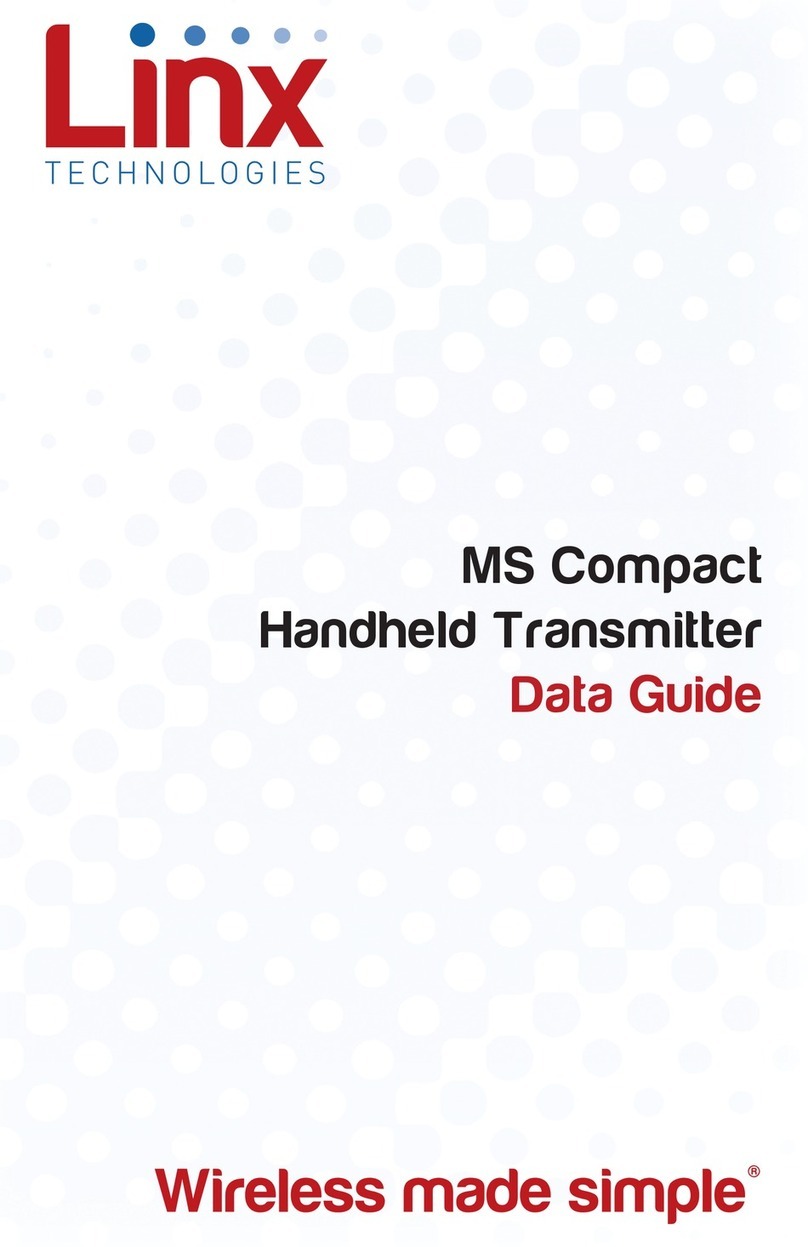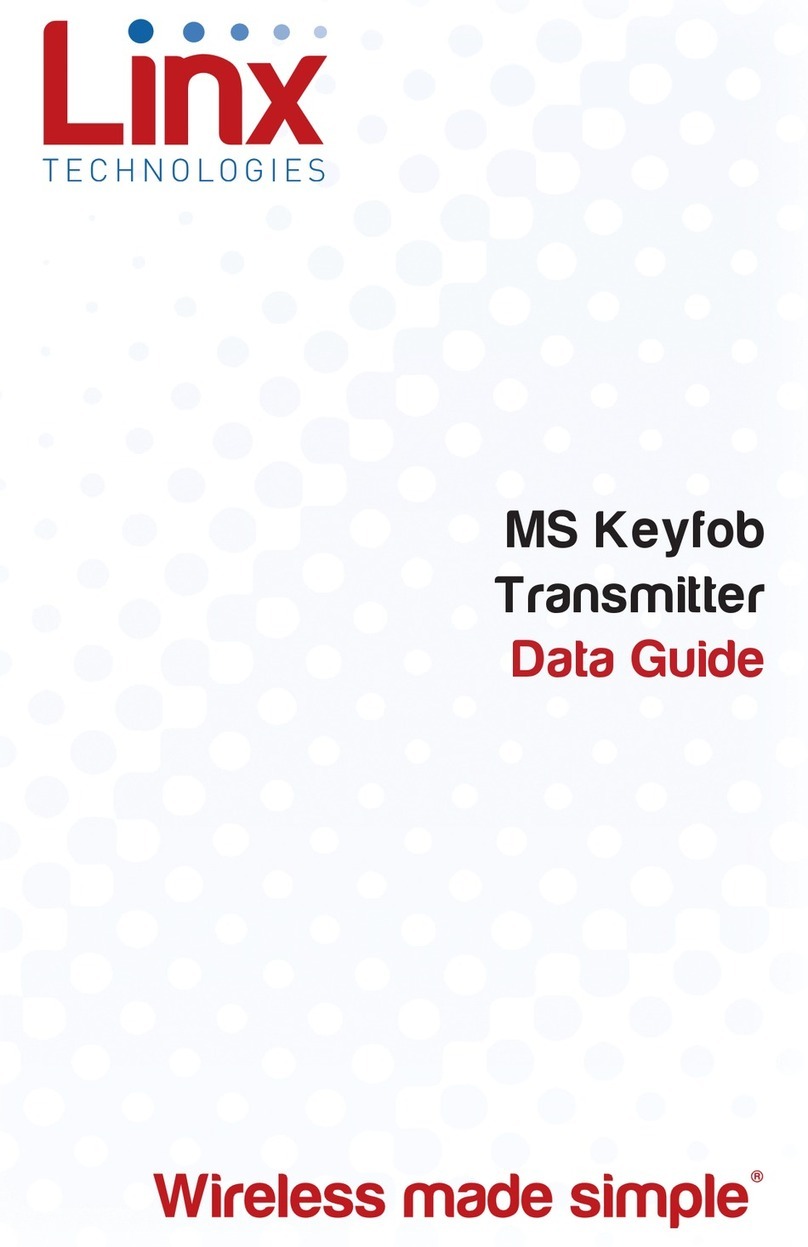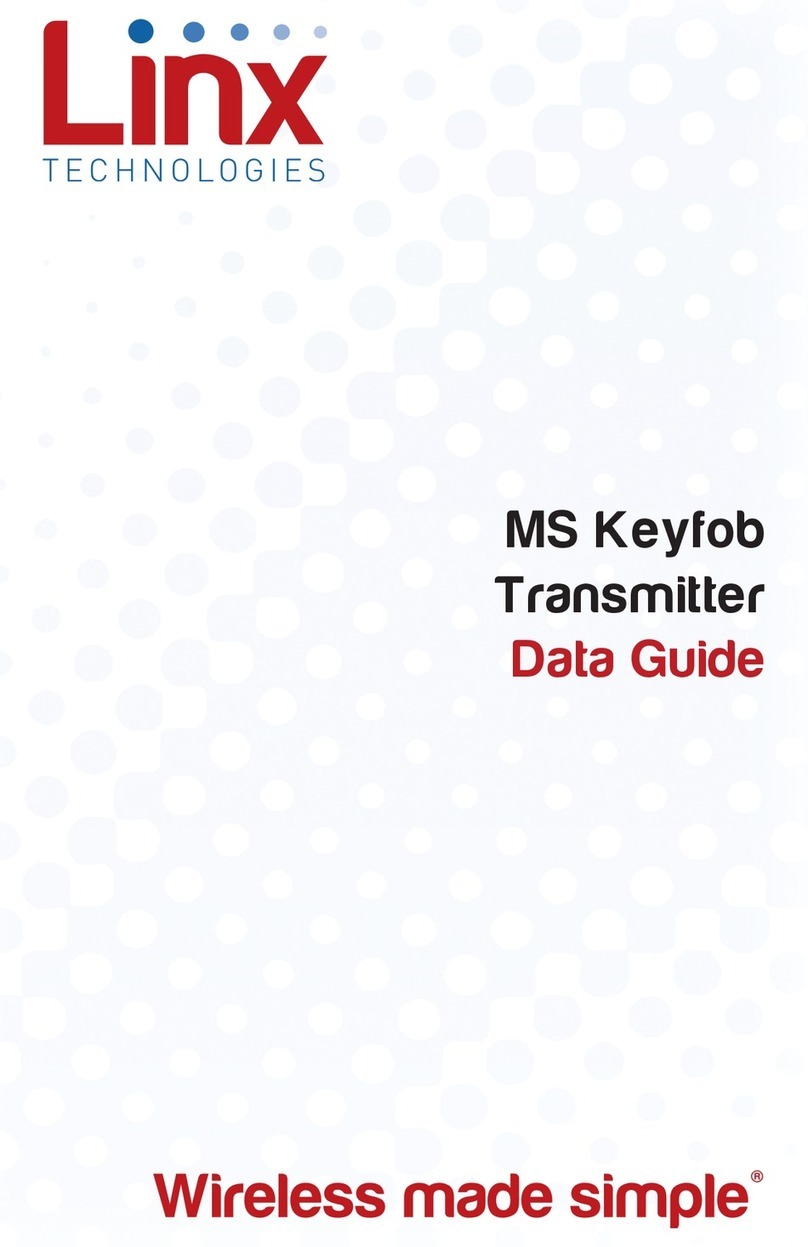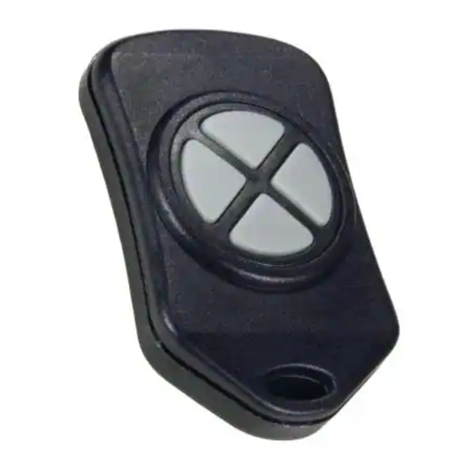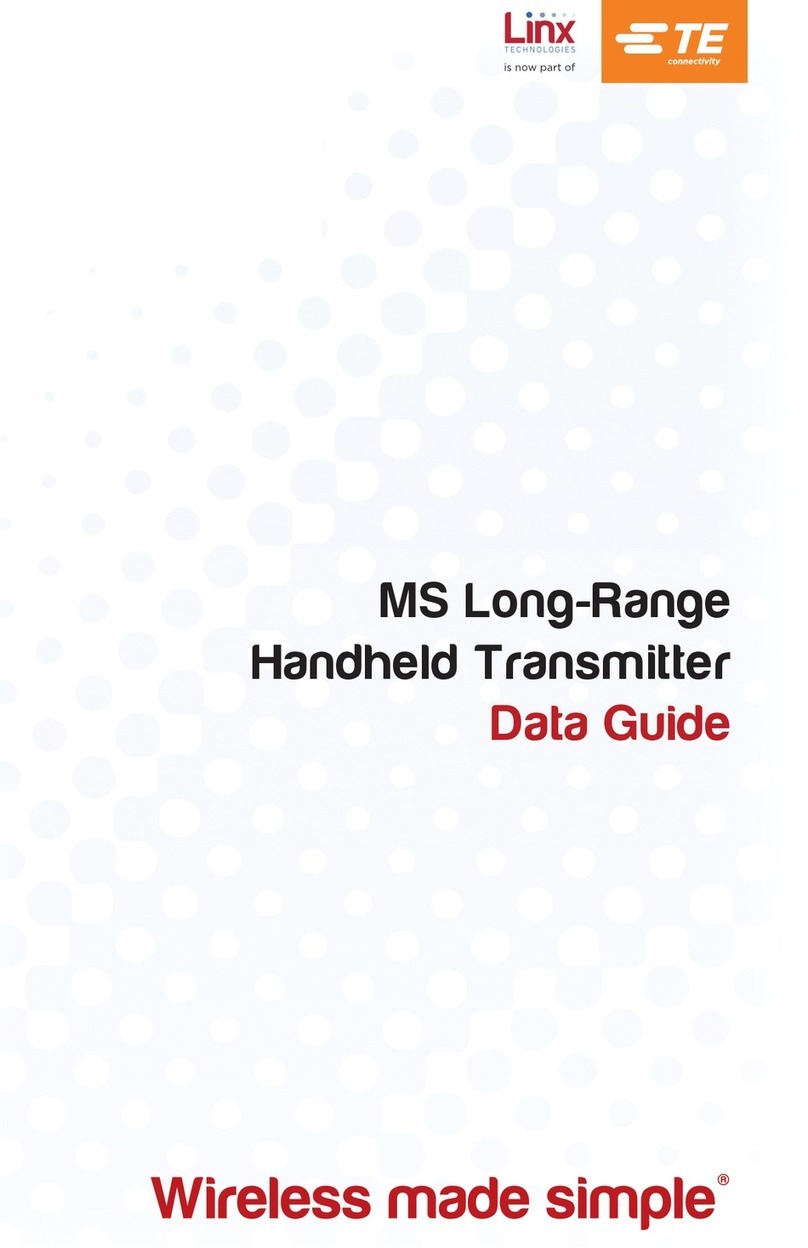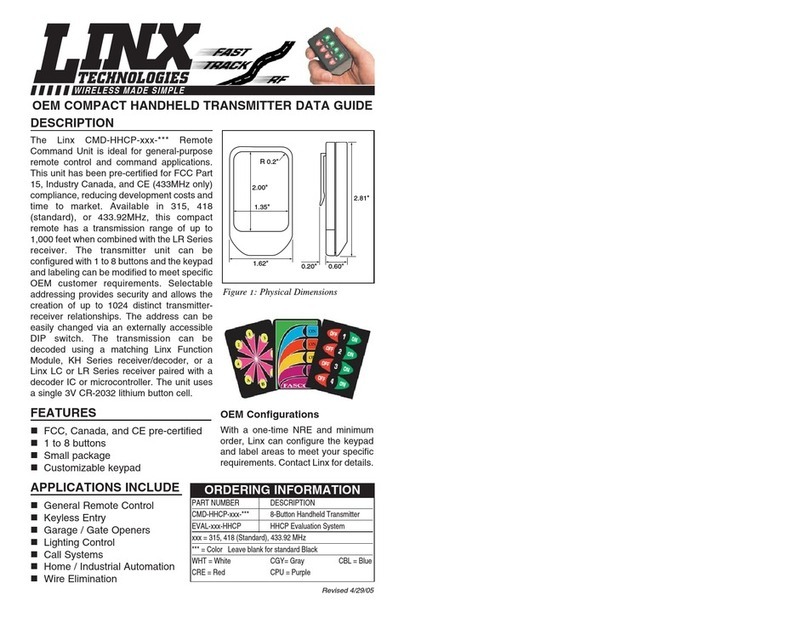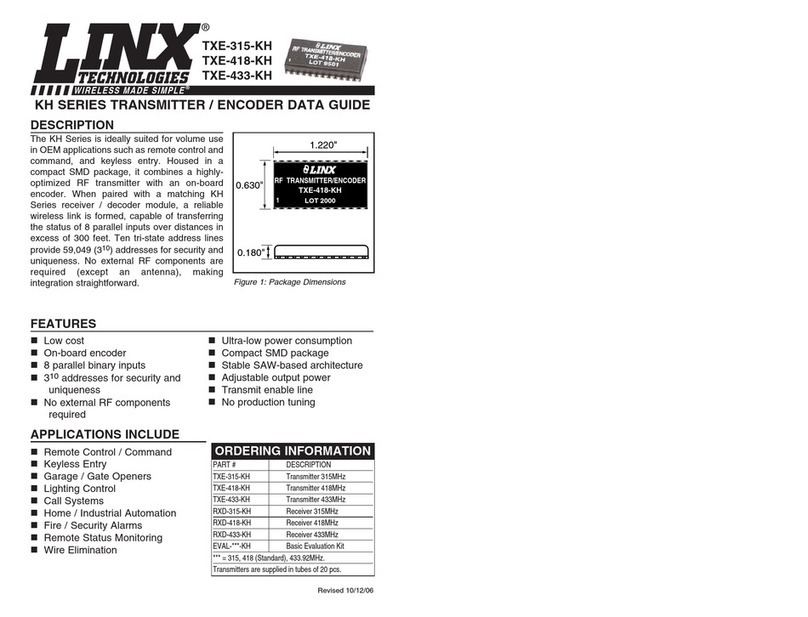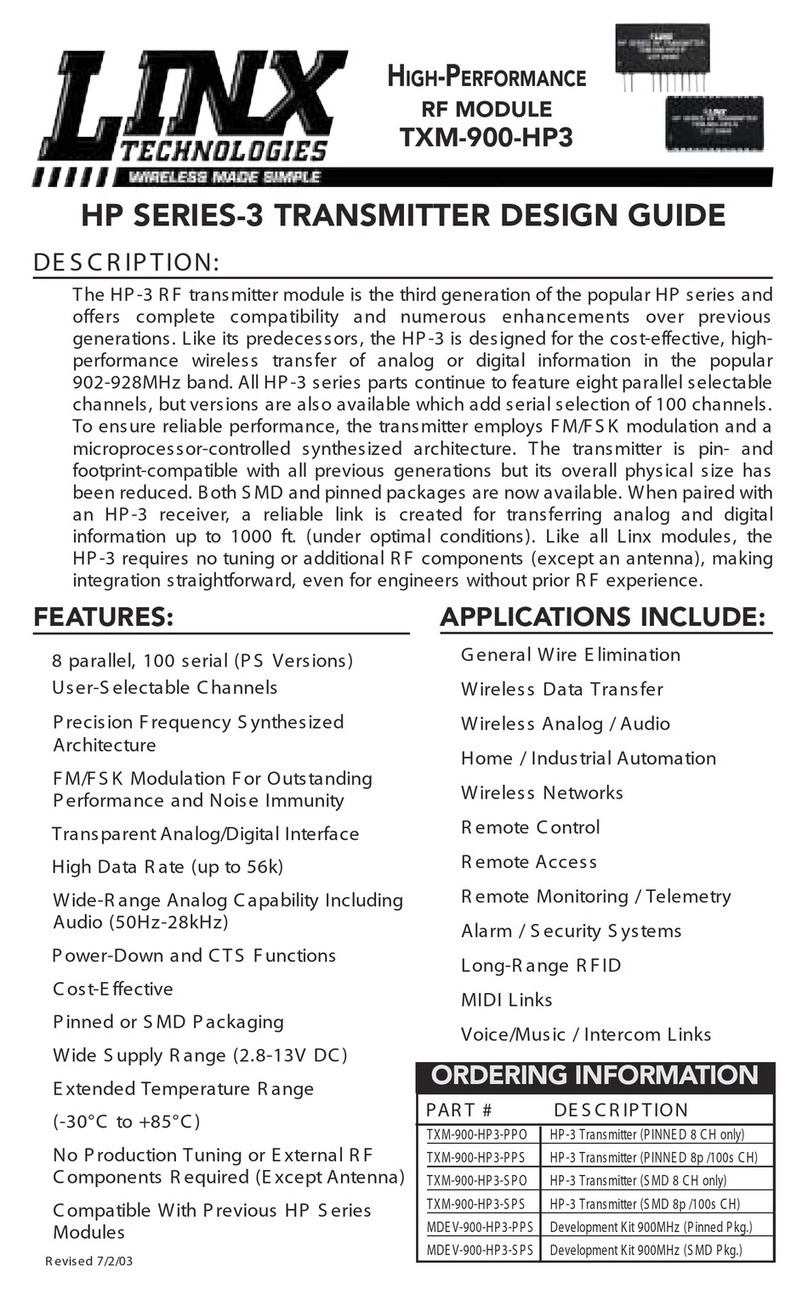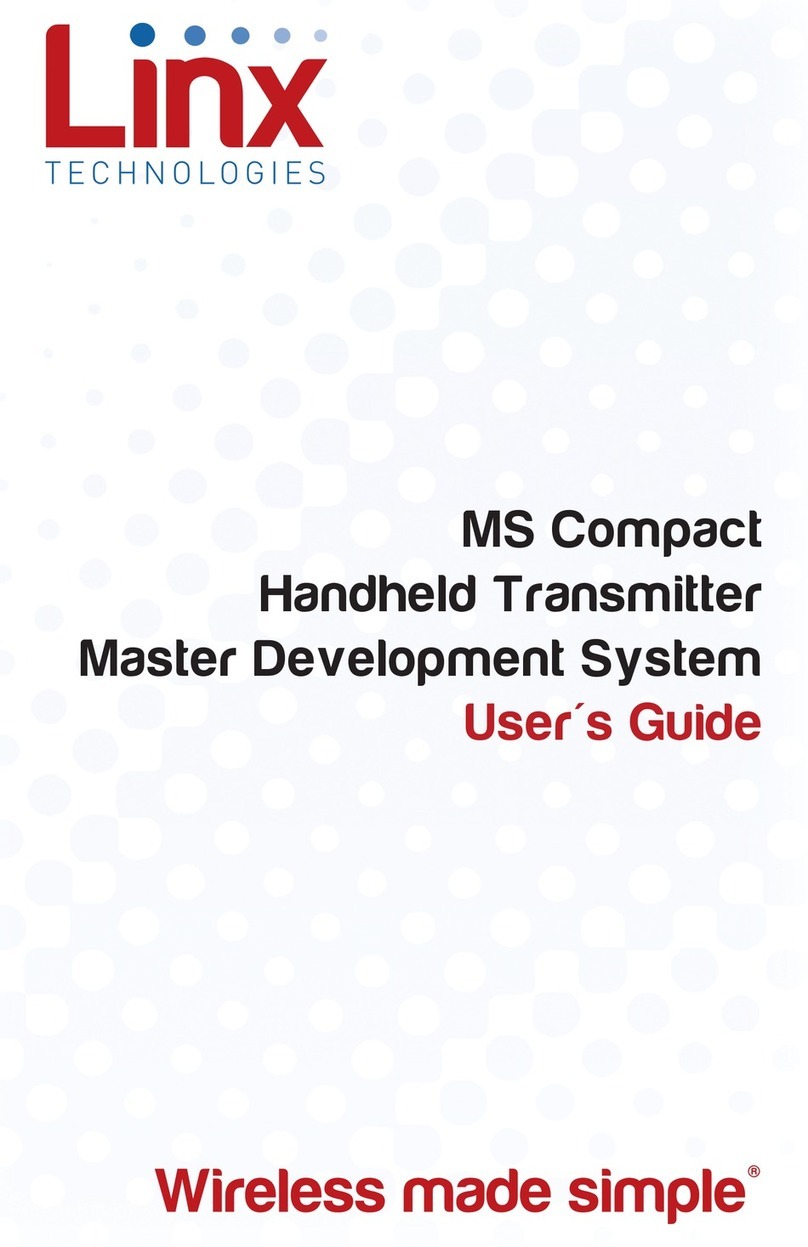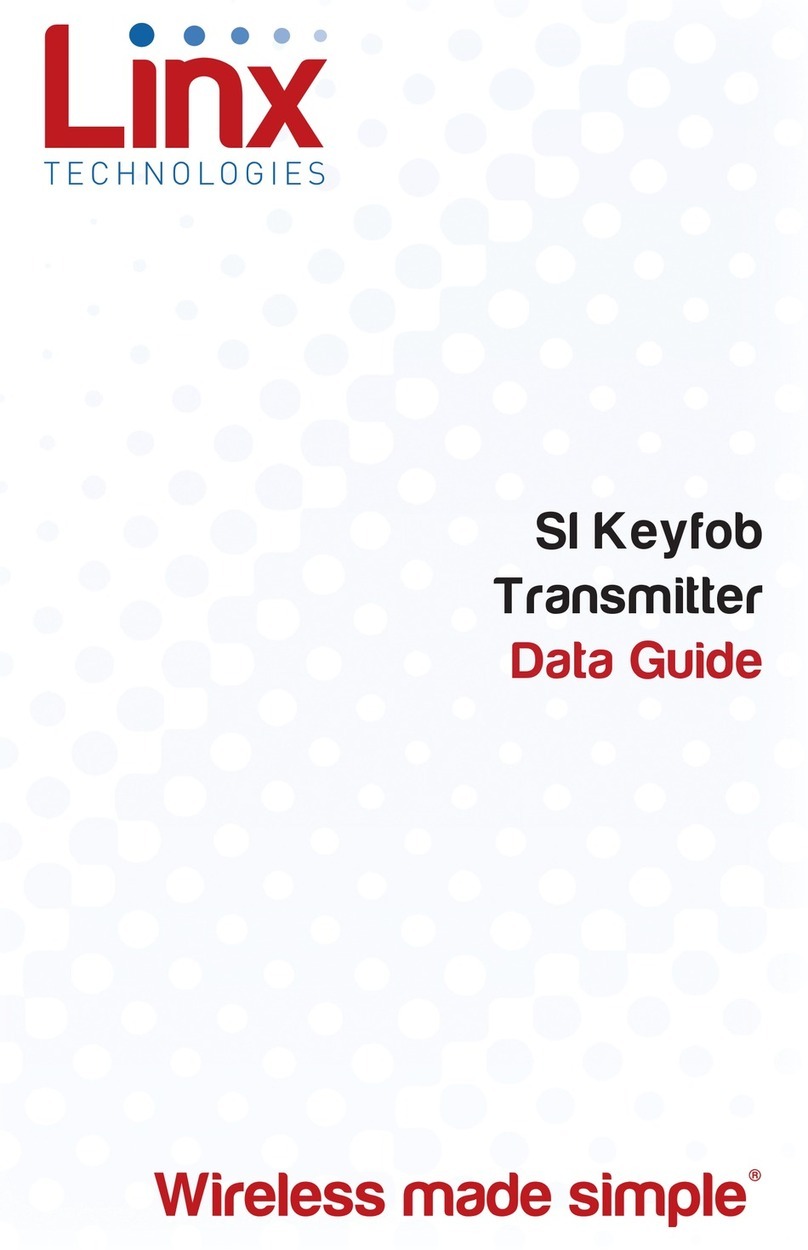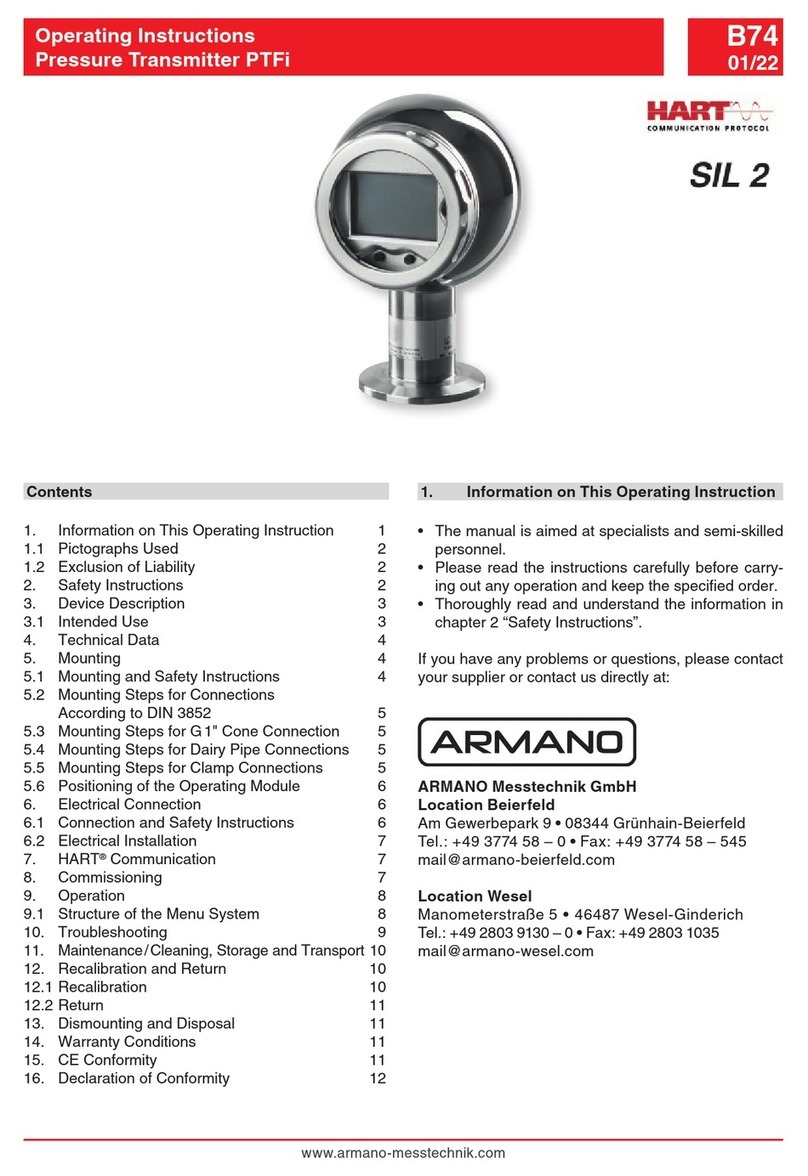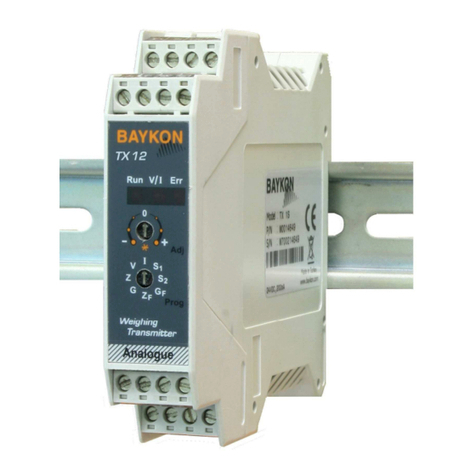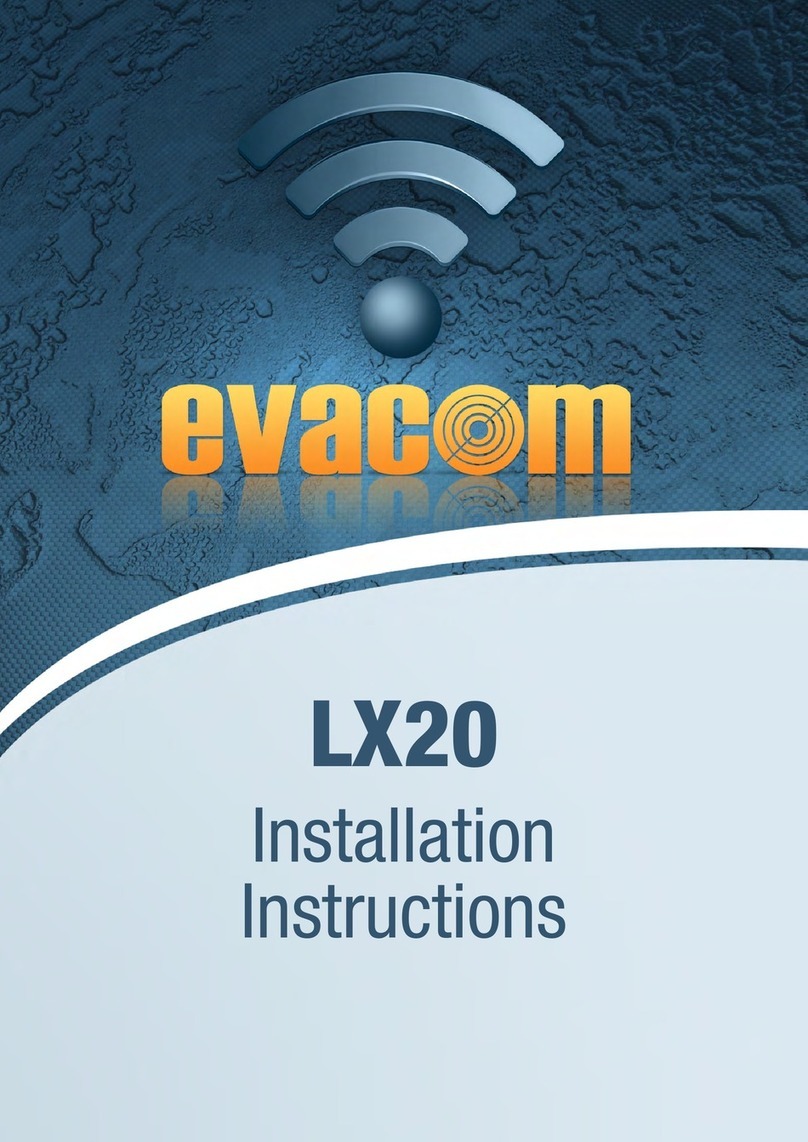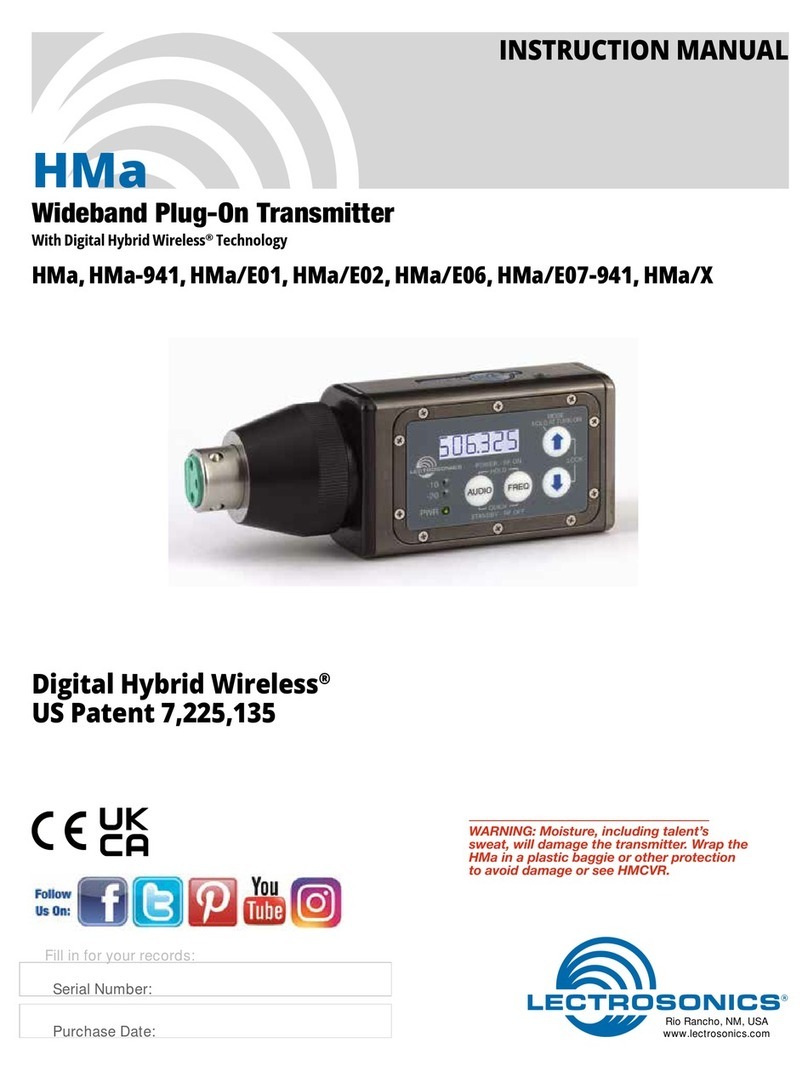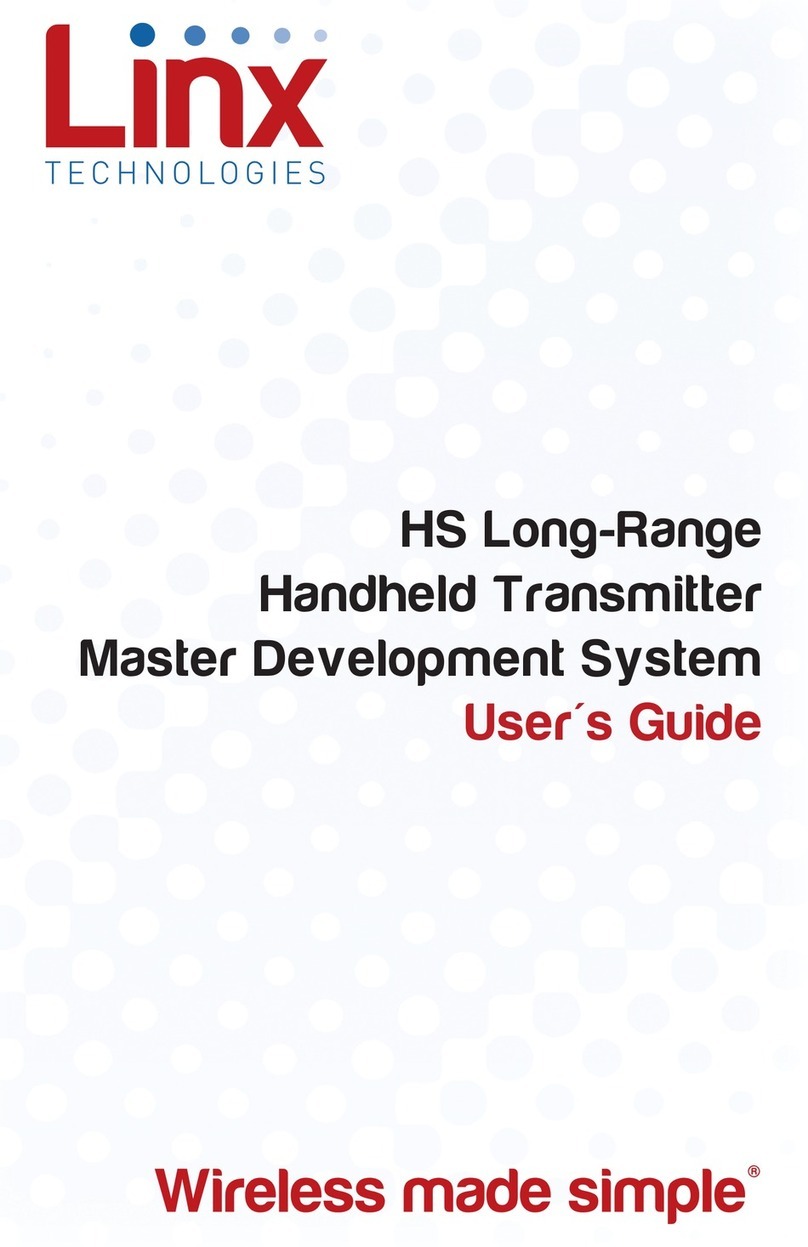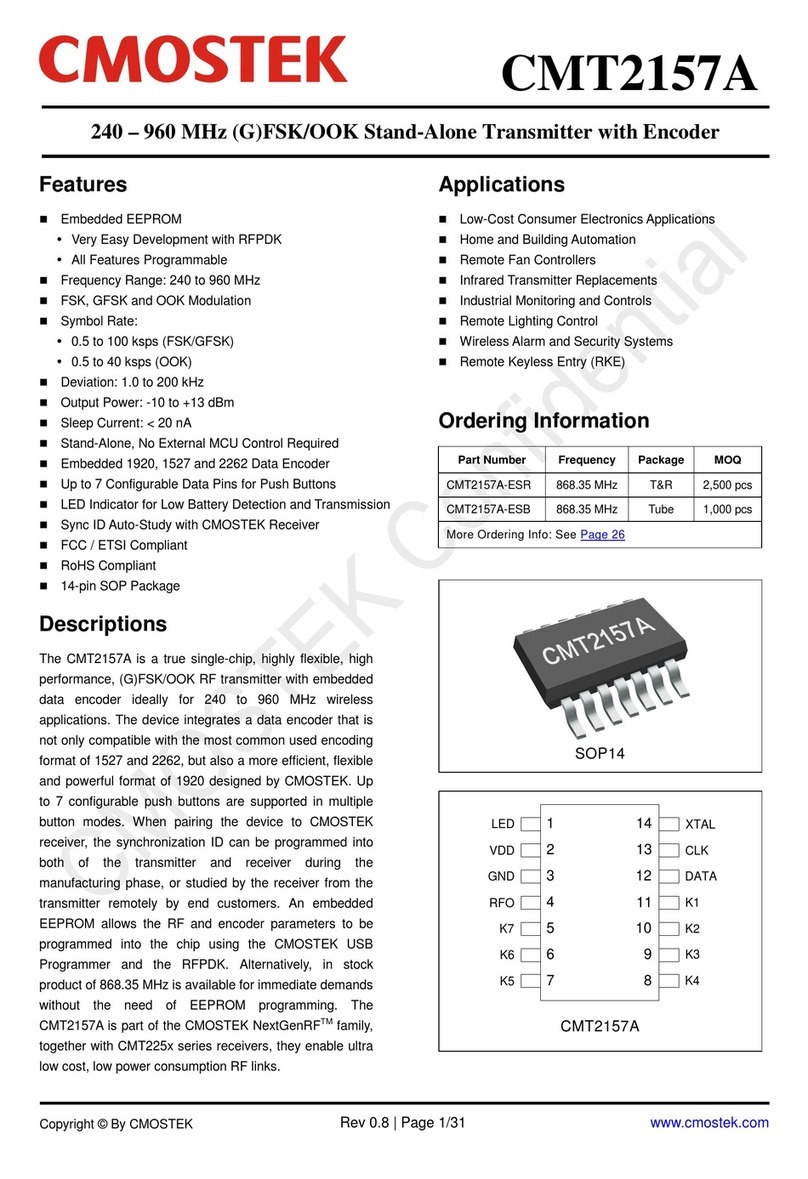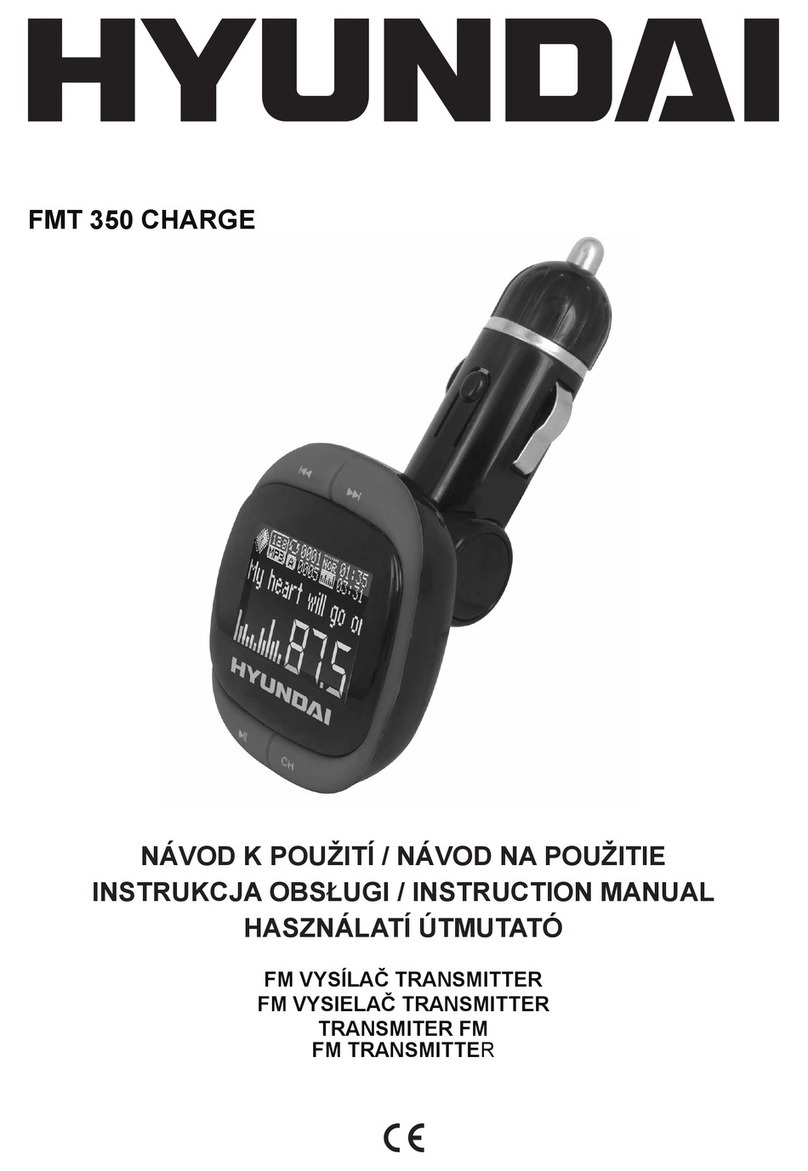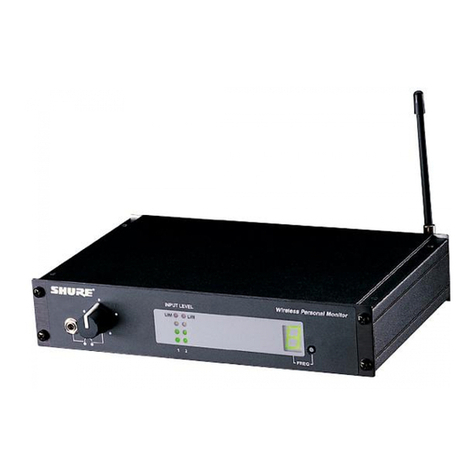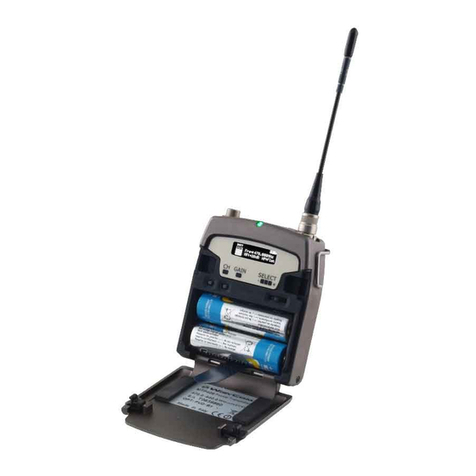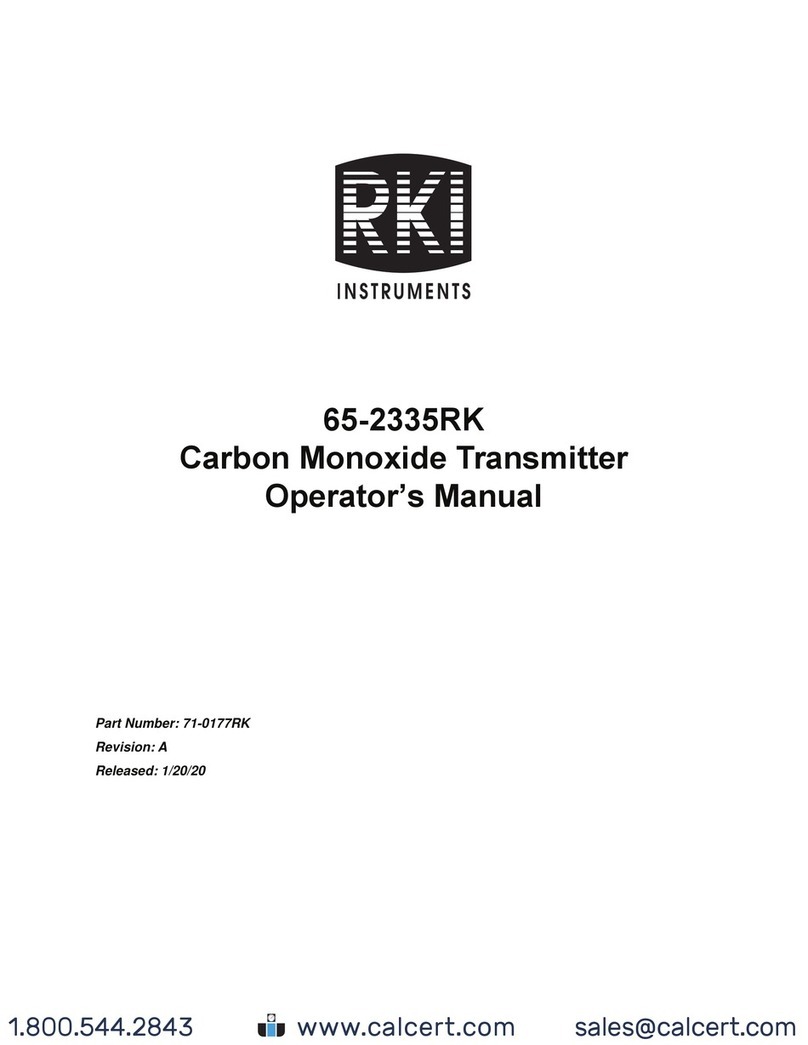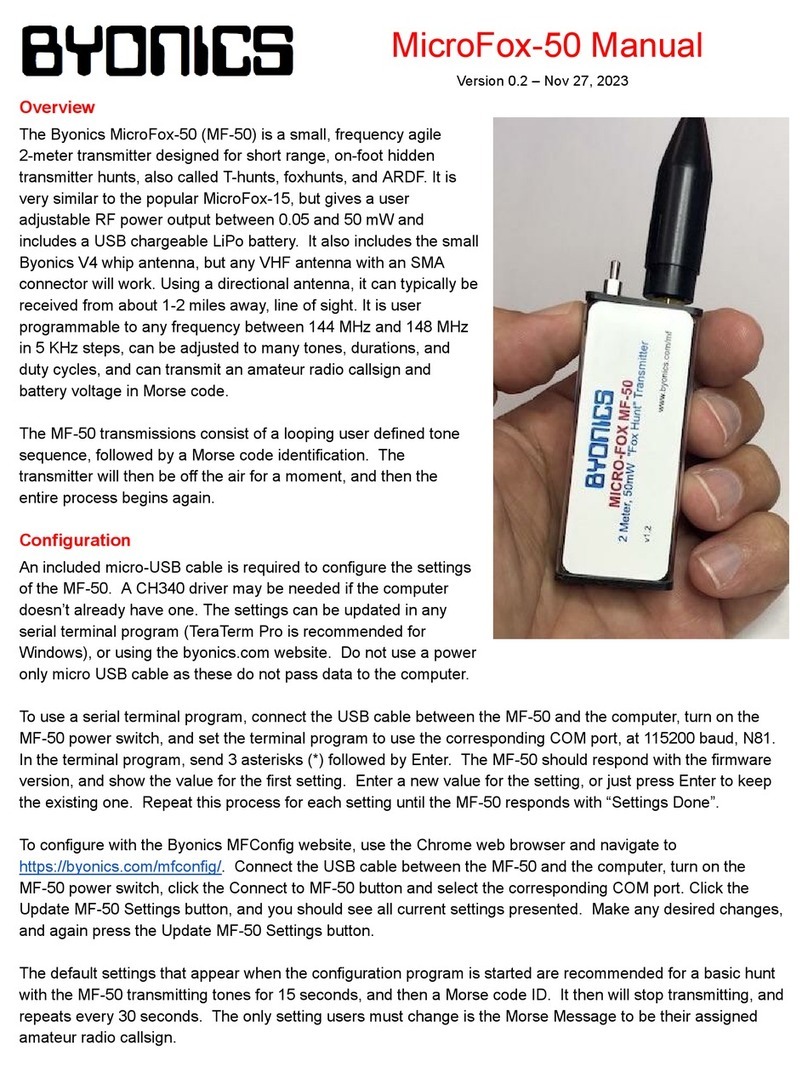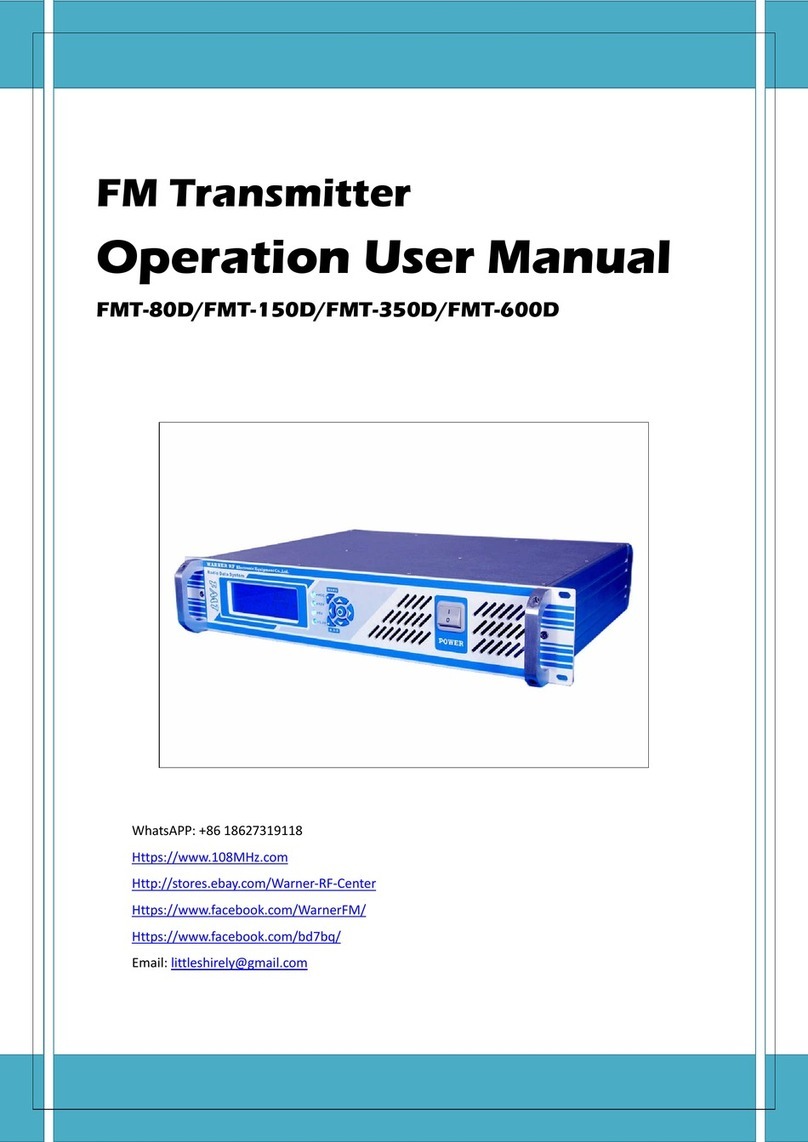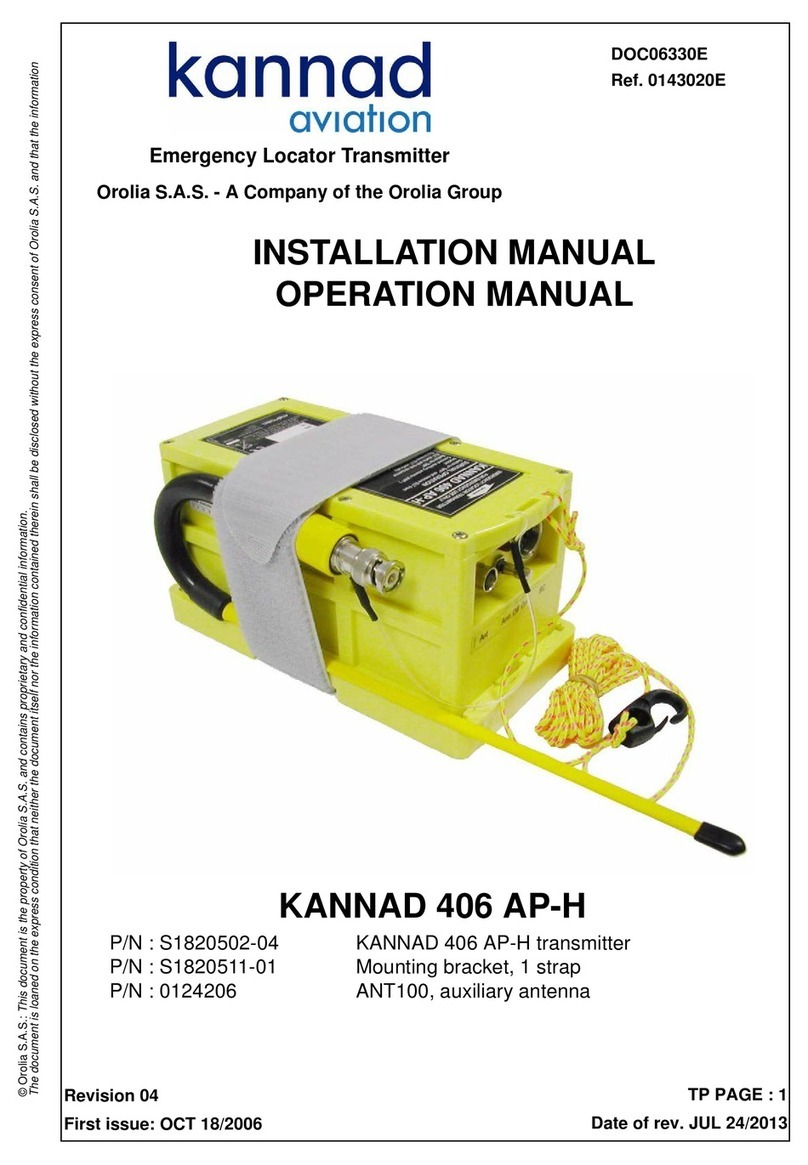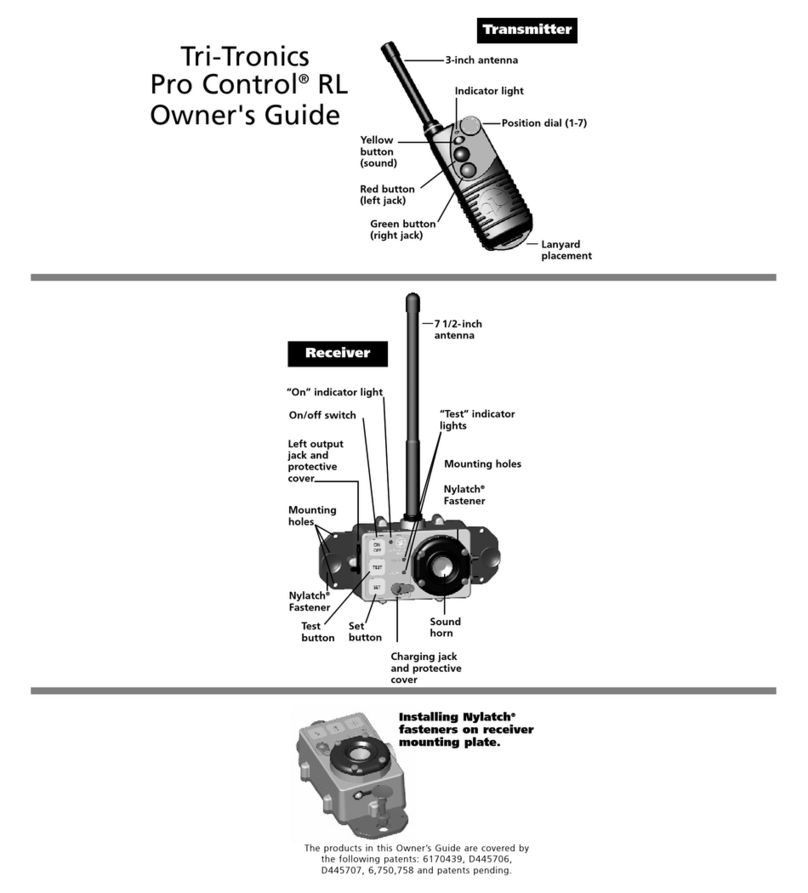
– – – –
2 3
Ordering Information
Part Number Description
OTX-***-HH-KF#-DS-xxx DS Keyfob Transmitter
EVAL-***-HH-KF-DS DS Keyfob Evaluation Kit
# = Number of Buttons, 1 to 5
*** = 418 (Standard) or 433MHz
xxx = Color (Leave blank for standard black)
WHT = White
CRE = Red
CGY = Gray
Keyfob Electrical Specifications
Parameter Designation Min. Typ. Max. Units Notes
Power Supply
Operating Voltage VCC 2.3 3.0 3.6 VDC
Supply Current lCC 12.6 mA
Power-Down Current lPDN 1.5 µA 1
Transmitter Section
Transmit Frequency Range FC
OTX-418-HH-KF#-DS 418 MHz
OTX-433-HH-KF#-DS 433.92 MHz
Center Frequency Accuracy –8 +8 kHz
Data Rate 4,800 bps
Environmental
Operating Temperature Range 0 +70 °C 1
1. Characterized, but not tested
Electrical Specications
Ordering Information
Figure 3: Ordering Information
Figure 4: Electrical Specifications
Theory of Operation
The DS Series Keyfob Transmitter combines a high-performance
synthesized transmitter with an on-board encoder IC to form a highly
reliable, yet cost-effective RF remote control transmitter. The transmitter’s
synthesized architecture delivers outstanding stability and frequency
accuracy while minimizing the effects of temperature, antenna port
loading and mismatching. This reduces or eliminates frequency pulling, bit
contraction, and other negative effects common to SAW-based transmitter
architectures, providing a significantly higher level of performance and
reliability.
When a button is pressed on the Keyfob, power is applied to the internal
circuitry and the encoder IC is enabled. The encoder detects the logic
states of the address lines and button data lines. These states are
formatted into a data packet. The encoder data is used to modulate the
transmitter, which, through the antenna, conveys the data into free space.
This continues until the button is released. On the receiver side, a DS
Series decoder IC is used to check the transmitter’s address bits against
the address settings of the receiving device. If a match is confirmed, the
decoder’s outputs are set to replicate the transmitter’s button states. These
outputs can then be used to activate external circuitry required by the
application.
The transmitter is compatible with the Linx LR Series receiver and LT Series
transceiver modules. Ranges of up to 750 feet are possible when the
transmitter is combined with the receiver and a good antenna. Applications
operating over shorter distances also benefit from the increased link
reliability and superior noise immunity provided by the LR and LT Series
modules.
The DS Series encoder inside the Keyfob transmitter uses a serial protocol
to encode the states of the buttons and addresses. The serial protocol
is much more immune to bit edge jitter than pulse width protocols, such
as those used by Holtek®devices. This gives much better range and
performance within that range. This also gives the DS better immunity to
noise from motors, switching power supplies, high current drivers and other
noise sources. This serial protocol updates the data line states on every
packet. This, combined with a faster data rate, give the serial protocol
a much faster response time than the Holtek®protocol (36.5ms typical
compared to 135ms).









